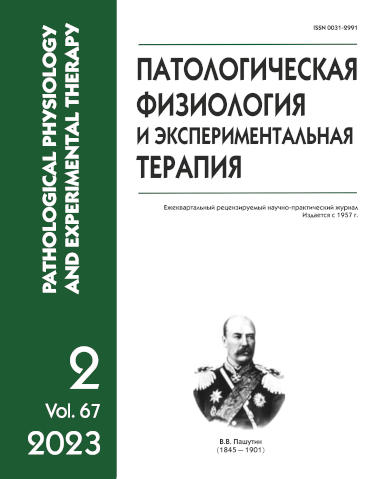Molecular aspects of the pathogenesis of hemorrhagic fever with renal syndrome (review)
Abstract
This review focuses on the mechanisms of development of hemorrhagic fever with renal syndrome (HFRS). A brief description of this zoonotic infection, the structure and values of its incidence are provided for various regions of the world. Following the infection with hantavirus, the disease starts from the virus replication in cells of the upper respiratory tract, their damage, and subsequent activation of alveolar macrophages and dendritic cells. Dysfunction of endothelial cells results in disturbed integrity of microvascular walls, activation of the immunobiological surveillance over the constant and individual antigenic composition of the body, and hemostatic disorders. This initiates platelet aggregation with the activation of thrombus formation and the development of complications in the form of disseminated intravascular coagulation (DIC) and acute renal failure. Cytokines, chemokines, and platelets have been demonstrated to closely interact in this process. Cytokine activation is noted already in early stages of the disease in association with increased levels of interferon γ (IFN-γ), tumor necrosis factor α, transforming growth factor β, and interleukins IL-6, IL-21 and IL-10, which correlates with severity of the patient's condition. Extremely high levels of IL-6, IL-10, and IFN-γ contribute to the development of severe hemorrhagic fever with a high mortality rate. The review also provides information on the role and place of microRNAs in the pathogenesis of HFRS and the prospects for their use as potential biomarkers for predicting the disease development and the effectiveness of therapy. Studying the dynamics of changes in the content of various regulatory molecules in the blood of patients with HFRS will provide new data on mechanisms of the disease and help development of treatment and prevention of this severe pathology.






